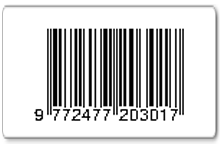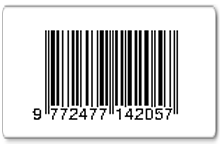Analysis of Students’ Comprehension and Misconception towards the Topic of Salt Solubility
Abstract
This study aimed to analyze students’ comprehension and misconception towards the topic of salt solubility both on the level of microscopic representation and understanding. This study utilized essay diagnostic test as instruments and interviews based on a case study of 10 students in grade 11 at senior high school in Bogor who were given 8 questions regarding salt solubility. The results showed that there was a misconception, 40% of the students misled in drawing microscopically the system of salt and sugar solubility and 50% of the students incorrectly drew the system due to the absence of interaction between salt particle and water, while 10% of the students sketched correctly though it is difficult to notice the result of salt ionization on the solvent. Moreover, 80% of the students were unable to find a link between the alteration system of solvent equilibrium caused by additional salt with various solvents on the macroscopic concept of an insoluble salt equilibrium system and the effect of adding similar ions on the equilibrium system.
Keywords
Full Text:
PDFReferences
Abell, S. K. & Lederman N. G. 2007, Handbook of research on science education, NJ Lawrence Erlbaum Associates, Mahwah
Alawiyah, N., Endang, S., and Triastuti, S 2018, ‘Analysis of misconception on solubility and solubility product constant (ksp) using three-tier multiple choice test’, Journal of Innovative Science Education, vol.7, no.1, pp. 122-9.
Barke, H.-D., Hazari, A., and Yitbarek, S 2009, Misconceptions in chemistry addressing perceptions in chemical education, Berlin, Springer-Verlag.
Brady J E 2000, Chemistry: ‘matter and its change’, John Wiley & Sons, USA
Buthelezi T, Laurel D, Nicholas H, Cheryl W, Dinah Z 2008, Chemistry : metter and change Chep. 9. The McGraw-Hill Companies, Inc, USA
Camacho, M. & Good, R 1989, ‘Problem solving and chemical equilibrium: successful vs. unsuccessful performance’, Journal of Research in Science Teaching, vol. 26, no.3, pp. 251-72
Chavan, Rajendra & Patankar, Dr. P 2016, Contructivist strategies for minimization of science misconceptions among school students. Aayushi International Interdisciplinary Research Journal (AIIRJ).
Childs P.E., Hayes S.M., O’dwyer A, 2015, Chemistry and everyday life: relating secondary school chemistry to the current and future lives of students. In: Eilks I., Hofstein A. (eds) Relevant Chemistry Education. Sense Publishers, Rotterdam.
Chittleborough, G.D 2004, ‘The role of teaching models and chemical representations in developing mental models of chemical phenomena, Thesis, Science and Mathematics Education Centre, Curtin University, Australia
Chiu M., Chou, C. & Liu, C 2002, ‘Dynamic processes of conceptual change: analysis of constructing mental models of chemical equilibrium’. Journal of Research in Science Teaching, vol. 39, no.8, 688-712.
Devetak E, Janes V, dan S G 2007, Assessing 16-year-old students’ understanding of aqueous solution at submicroscopic level, Springer Science, Germany.
Dogan, A. M 2016, ‘Exploring the impact of argumentation on pre- service science teachers’ conceptual understanding of chemical equilibrium’. Chemistry Education Research and Practice, vol. 17, no.1, pp. 111-9
Eilks I, Hofstein A, 2015, Relevant chemistry education: from theory to practice, Sense Publishers, Rotterdam
Fariyani Q, Rusilowati A., & Sugianto 2015, ‘Pengembangan four-tier diagnostic test untuk mengungkap miskonsepsi fisika siswa sma kelas x’. Journal of Innovative Science Education, vol. 4, no. 2, pp.41-9.
Flowers P, Richard L, 2015, Chemistry, Open Stax Collage, viewed 15 May 2020.
Gilbert, J.K. & Treagust, D.F 2009, Multiple representations in chemical education, Springer, Dordrecht
Goldberg DE, 2005, Schaum’s outline of theory and problems of beginning chemistry, The McGraw-Hill Companies, Inc, USA.
Gurel, K., D., Eryilmaz, A., & McDermott, C., L 2015, A review and comparison of diagnostic instruments to identify students’ misconceptions in science. Eurasia Journal of Mathematics, Science & Technology Education, vol. 11, no. 5, pp. 989- 1008.
Harrison A.G., Treagust D.F 2002, ‘The Particulate Nature of Matter: Challenges in Understanding the Submicroscopic World. In: Gilbert J.K., De Jong O., Justi R., Treagust D.F., Van Driel J.H. (eds) Chemical Education: Towards Research-based Practice. Science & Technology Education Library, vol 17. Springer, Dordrecht
Jones, M. G., Gardner, G. E., Falvo, M., & Taylor, A, 2015, Precollege nanotechnology education: a different kind of thinking. Nano technology Reviews, vol.4, no.1,, pp. 117–27.
Jones, M. G., Taylor, A., Minogue, J., Broadwell, B., Wiebe, E., & Carter, G 2007, Understanding scale: powers of ten. journal of science education and technology, vol. 16, no. 2, pp. 191–202.
Jon-Marc G. Rodriguez and Marcy H T, 2018, ‘Modifying laboratory experiments to promote engagement in critical thinking by reframing prelab and postlab questions’, Journal of Chemical Education, vol. 95, no. 12, pp. 2141–47
Kabapınar, F & Leach, John & Scott, P 2005, The design and evaluation of a teaching-learning sequence addressing the solubility concept with turkish secondary school students. special issue. International Journal of Science Education.
Kirbulut, Z. D. & Geban, O 2014, ‘Using three-tier diagnostic test to assess students’ misconceptions of states of matter’, Eurasia Journal of Mathematics, Science & Technology Education, vol. 10, no.5, pp. 509-21.
Krause, SJ and Omowunmi I-Sodeye, 2013, The effect of a visually-based intervention on students’ misconceptions related to solutions, solubility, and saturation in a core materials course, American Society for Engineering Education
Marina, S 2017, ‘Conceptual understanding of solubility concepts among. Section of Natural, Mathematical and Biotechnical Sciences’, MASA, vol.38, no. 1
Megna R, 2016, Metter and Its Changes, Chap 3, McGraw-Hill Education, USA
Mohideen JM, Karunaratne S, Wimalasiri K MS 2012, ‘Studens’ understanding of the solubility’, Book of Abstracts of the Peradeniya University Research Sessions, Sri Lanka, Vol 17.
Nelson, P. G 2002, ‘Teaching chemistry progressively: from substances, to atoms molecules, to electrons and nuclei’, Chemistry Education Research and Practice, vol. 34, pp. 215-28.
Nicoll, G 2001, ‘A report of undergraduates’ bonding misconceptions’. International Journal of Science Education, vol. 23, no.7, 707-30.
Norris, D 2017, ‘Short-term memory and long-term memory are still different’, Psychological Bulletin, vol. 143.
Nurrenbern, S. C., & Pickering, M 1987, ‘Concept learning versus problem solving is there a difference?’ Journal of Chemical Education, vol. 64, no.6, pp. 508–10
O'Dwyer, A., & Childs, P. E. 2012, “Organic chemistry in action! an action research project to improve the teaching of organic chemistry by using findings of chemistry education research (CER)”, Chemistry in Action, vol. 95, pp. 8-15.
Önder, I., & Geban, Ö, 2006, ‘The effect of conceptual change texts oriented instruction on students' understanding of the solubility equilibrium concept’, Hacettepe University Journal of Education, vol.30, pp. 166-173.
Oxtoby DW, Nachtrieb NH and Gillis HP, 2001, ‘Principles of Modern Chemistry’, 4th Edition, Brooks Cole, London
Ozmen, H., & Yildirim, N 2005, ‘Effect of work sheets on student’s success: Acids and bases sample’ Journal of Turkish Science Education, vol. 2, no. 2, pp. 10-3.
Patil, S, Chavan, R & Khandagale, V 2019, Identification of misconceptions in science: tools, techniques & skills for teachers. 8. 466-72.
Rahmawati Y 2013, ‘Revealing and reconceptualising teaching identity through the landscapes of culture, religion, transformative learning, and sustainability education’, A Transformation Journey of a Science Educator Doctoral Thesis, Curtin University, Australia.
Rahmawati, Y., Ridwan, A. & Nurbaity 2017, ‘Should we learn culture in chemistry classroom: integration ethnochemistry in culturally responsive teaching’, AIP Conf. Proceedings, vol. 1868.
Raviolo A 2001, ‘Assessing students’ conceptual understanding of solubility equilibrium’, Journal of Chemical Education, vol. 78, no. 5.
Roy, S 2016, ‘Chemistry in our daily life: preliminary information’,, International Journal of Home Science, vol. 2, no. 361-6.
Stephen K, & Amaneh, T 2007, Diagnosing students' misconceptions on solubility and saturation for understanding of phase diagrams’, American Society for Engineering Education, Arizona State University, USA
Sunyono, 2011, ‘Kajian tentang peran multipel representasi pembelajaran kimia dalam pengembangan model mental siswa. Prosiding Seminar Nasional Sains’, Universitas Negeri Surabaya, Surabaya
Taber K, 2002, Chemical misconceptions: prevention, diagnosis and cure. The Royal Society of Chemistry.
Tacettin P.¸Nurtac¸ C, 2004, ‘Students’ understanding of solution chemistry concepts’. Journal of Chemical Education, vol. 80, no.11
Thompson, F, 2006, ‘An Exploration of common student misconceptions in Science’, International Education Journal, vol. 7, no. 4, pp. 553-9.
Treagust, D, Duit, R & Nieswandt, M 2000, ‘Sources of students difficulties in learning chemistry’. Educación Química.
Üce, M & Ceyhan, İ 2019, ‘Misconception in chemistry education and practices to eliminate them: literature analysis. Journal of Education and Training Studies, vol. 7.
Yalcin, U 2014, Conceptual change texts oriented instruction in teaching pmsolution concepts’, Thesis, Middle East Technical University, Turkey.
DOI: http://dx.doi.org/10.30870/jppi.v6i1.7324
Refbacks
- There are currently no refbacks.
Copyright (c) 2020 Jurnal Penelitian dan Pembelajaran IPA

This work is licensed under a Creative Commons Attribution 4.0 International License.
Jurnal Penelitian dan Pembelajaran IPA is licensed under a Creative Commons Attribution 4.0 International License
Copyright © 2023 Jurnal Penelitian dan Pembelajaran IPA. All rights reserved.






